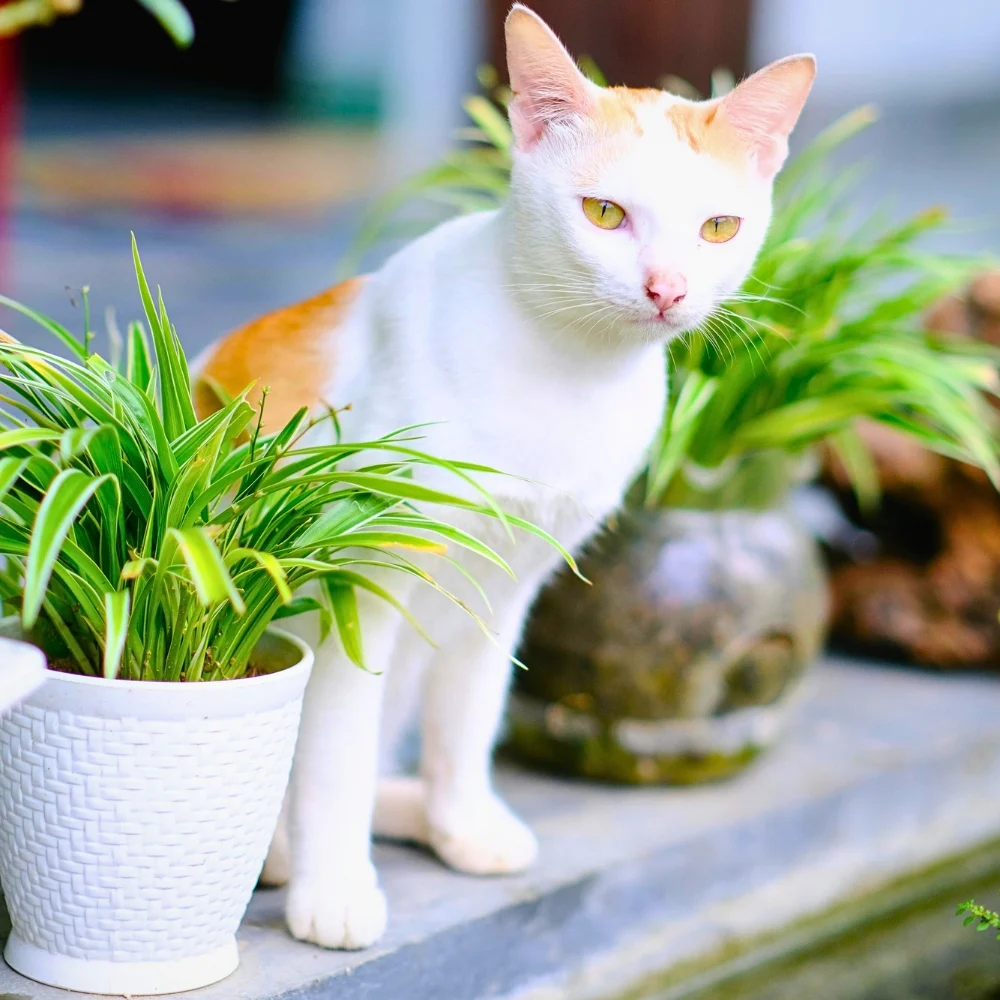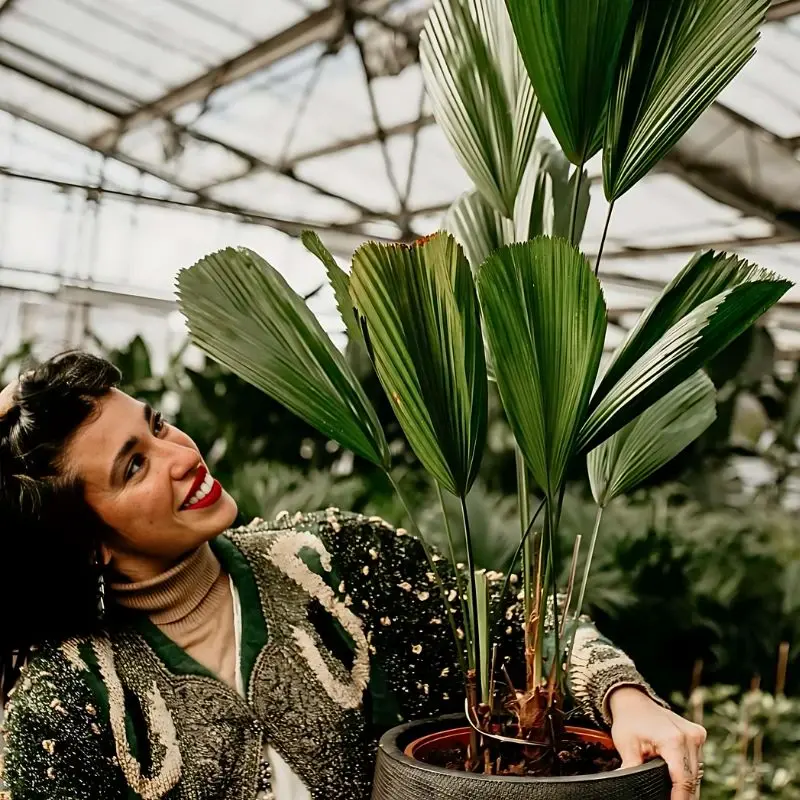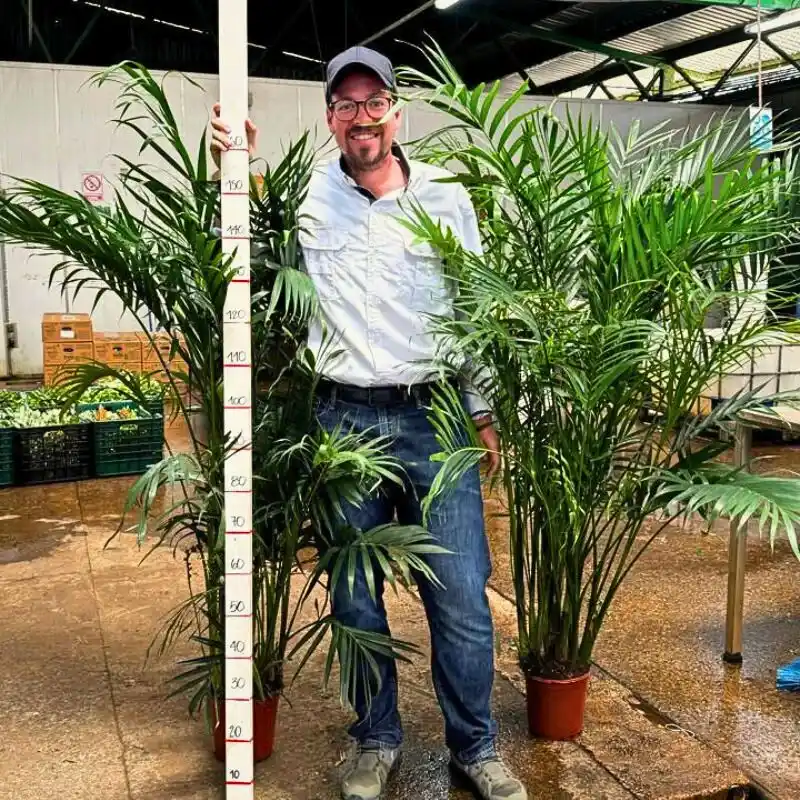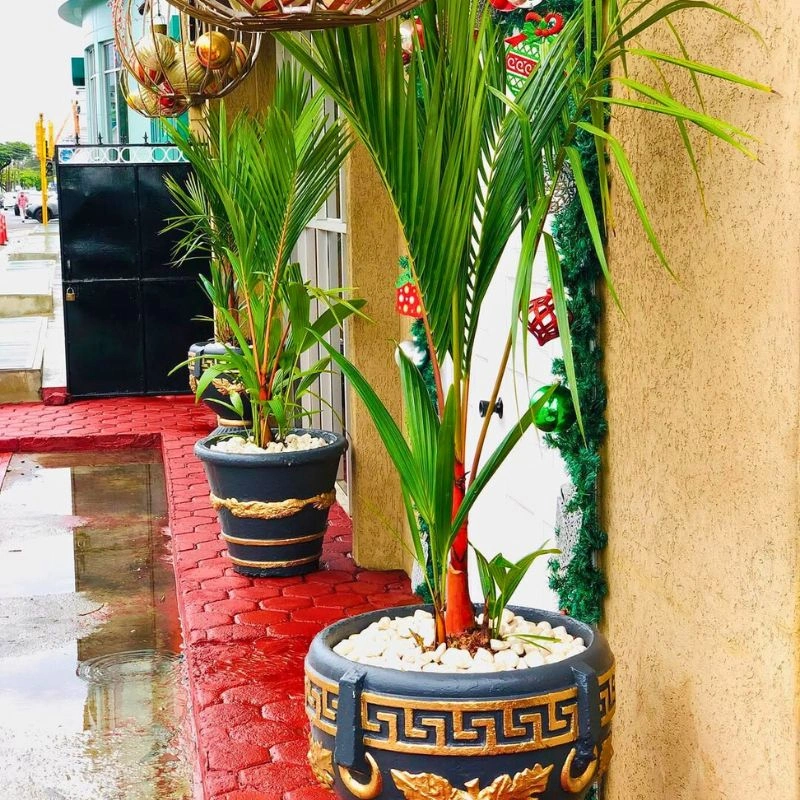Inviting the graceful presence of the Sago Palm Tree into your tropical garden or indoors will infuse a touch of greenery and the desired elegance into your spaces. Whether you are new to the adoption of palm trees within your indoor or outdoor spaces, Cycas revoluta is the ideal choice and a great way to kickstart your palm tree growing journey.
Sago Palms are a popular choice for tropical gardens and indoor spaces due to their beauty and attractive fern-like foliage. These palm trees are also easy to grow and maintain. With the following growing, caring, and propagation guide, you will get a chance to enjoy the elegance of the Sago Palm tree fully!
History of the Sago Palm Tree
The Sago Palm Tree, also referred to as the Cycas revoluta was not originally a palm tree but a cycad. Cycads have been in existence for millions of years. The same goes for the Sago Palm which has changed very little for a longer period of time, actually since being discovered.

In Asia and the Pacific Islands, the Sago Palm tree has cultural and economic significance, in some cultures, it is used as a dietary special, and its trunk pith could be processed to give the sago flour, a starchy food source. In contemporary society, this tree is popular for landscaping in both tropical and sub-tropical regions. It is valued for its sleek appeal and ornamental benefits.
Tips to Kickstart Your Sago Palm Growing Journey
Full-grown Sago Palm trees can reward you with an impressive height of between 2-3 meters (6-8 ft) and a trunk diameter of 30-60 centimeters (1-2 ft). However, the achievement of this size is only possible when this palm tree is accorded the opportunity to grow under optimal conditions.
The cheat code to growing a great Sago Palm tree is starting your growing journey with the following techniques;
Start With Selecting the Location
Whether growing indoors or outdoors, the location you intend to grow your Sago Palm tree plays a crucial role in its growth. The chosen location should have sufficient access to full or partial sunlight throughout the day.
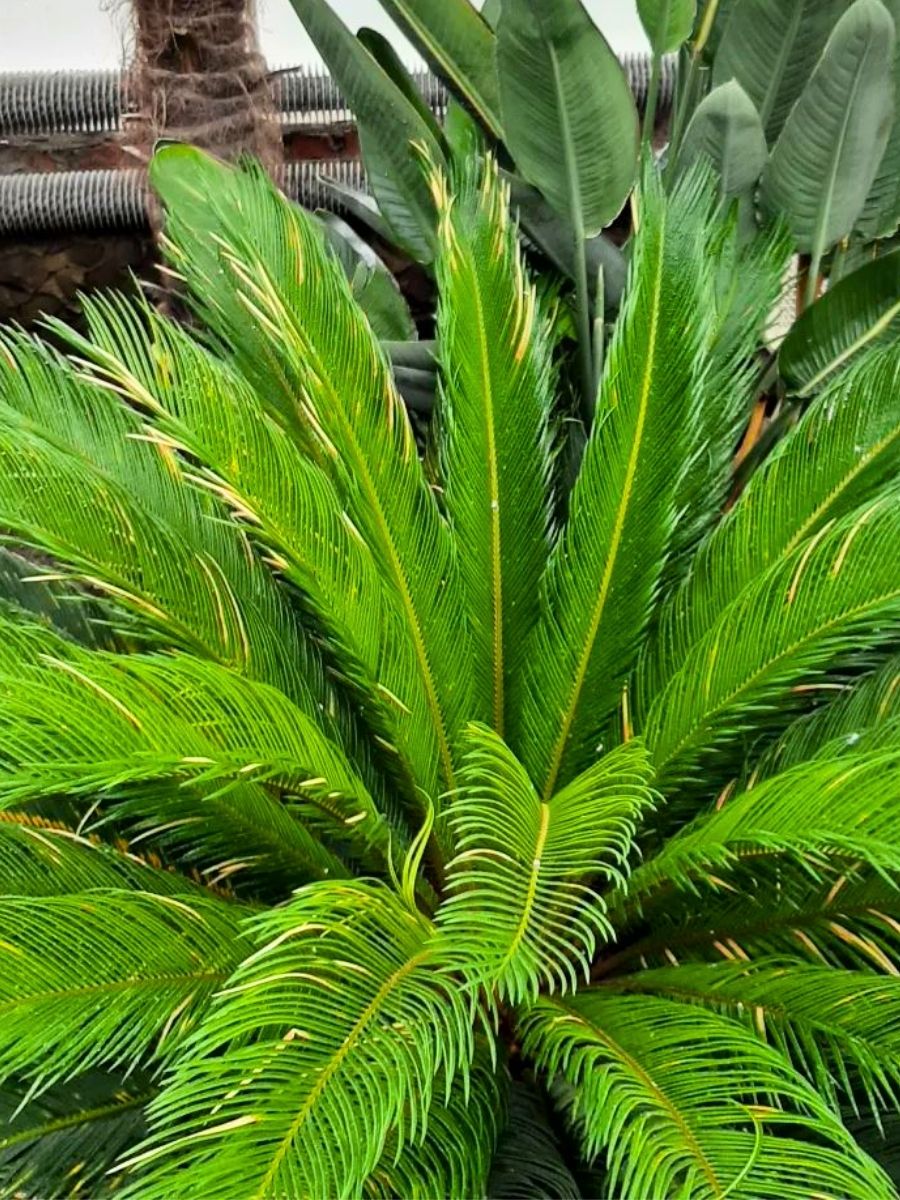
Depending on the growing medium, container, or directly on the ground, ensure the soil is well-draining. Given that it is suitable for the tropics, it detests excessive watering and slow-draining soil, which is a perfect recipe for root rot.
Soil Preparation
Ensure the soil you intend to plant your Sago Palm tree in, is well-draining, and rich in organic matter. This is important to enhance your sago palm tree and start its growing journey the right way. The soil can be slightly acidic to neutral, the ideal pH levels range from 6-7.
Planting
Considering the design layout of your garden and climatic conditions is important before planting your Sago Palm. In the event that you are in a sub-tropical region and it gets extremely cold at a certain period annually, planting your tree in a container is recommended. This will give you an opportunity to transfer it indoors when it gets unbearably cold for your palm.
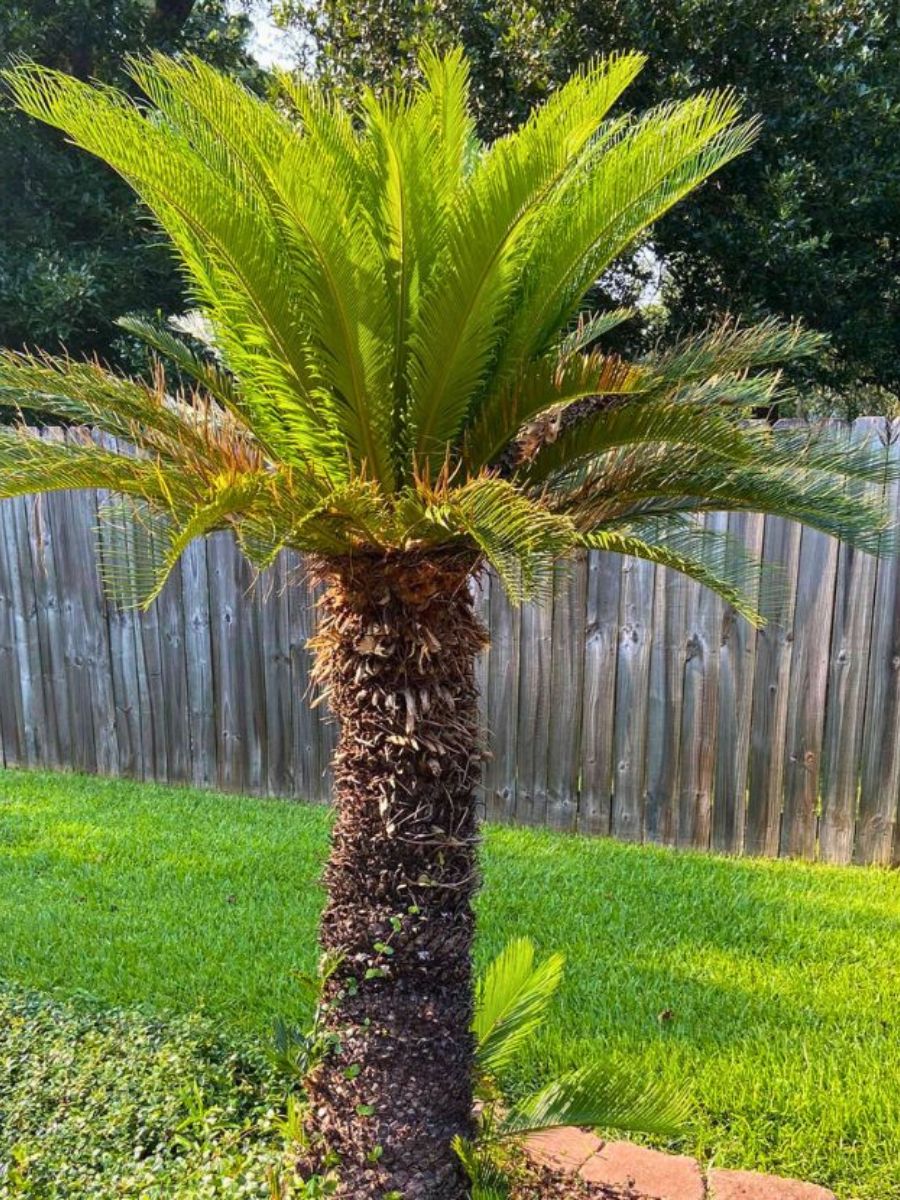
However, when planting in the ground within your tropical garden, consider digging a hole twice the root size, this will accommodate the anticipated growth.
Watering the Sago Palm Tree
Please note that the Sago Palm tree is sensitive to root rot, majorly as a result of overwatering, combined with poorly draining soil. Though it is drought-tolerant, it does not mean you should not water your palm tree.
Watering your Sago Palm tree, should be done deeply, especially when the top inches of the soil runs dry. Especially during the growing season, intensify your watering and reduce drastically during the cooler months.
Fertilizing the Palm Tree Sago
The application of fertilizer is vital to stimulate the desired growth, consider a well-balanced and slow-release fertilizer during the growing season.
.jpg?1697521893382)
Be aware of the recommended quantities or the application rate to avoid damaging your Sago Palm tree. Fertilizing should go hand in hand with adequate watering to allow the uptake of nutrients, which contributes to boosted growth.
Caring for the Sago Palm Tree
Providing optimal growing conditions for your palm tree is not enough, but consistently and proactively caring for it will do the trick. Pruning the yellowing fronds to maintain their aesthetical appeal is much needed from time to time. While pruning, be cautious not to damage healthy foliage, and always use a well-sterilized tool.
The Sago Palm tree is sensitive to cooler temperatures, during winter consider covering it if it is grown in your tropical garden. However, if you have your Sago Palm tree in a container, bring it indoors during winter. Scale insects and mealy bugs are the most common pests associated with the palm tree, but the infestation can easily be mitigated by applying neem oil or soapy water.
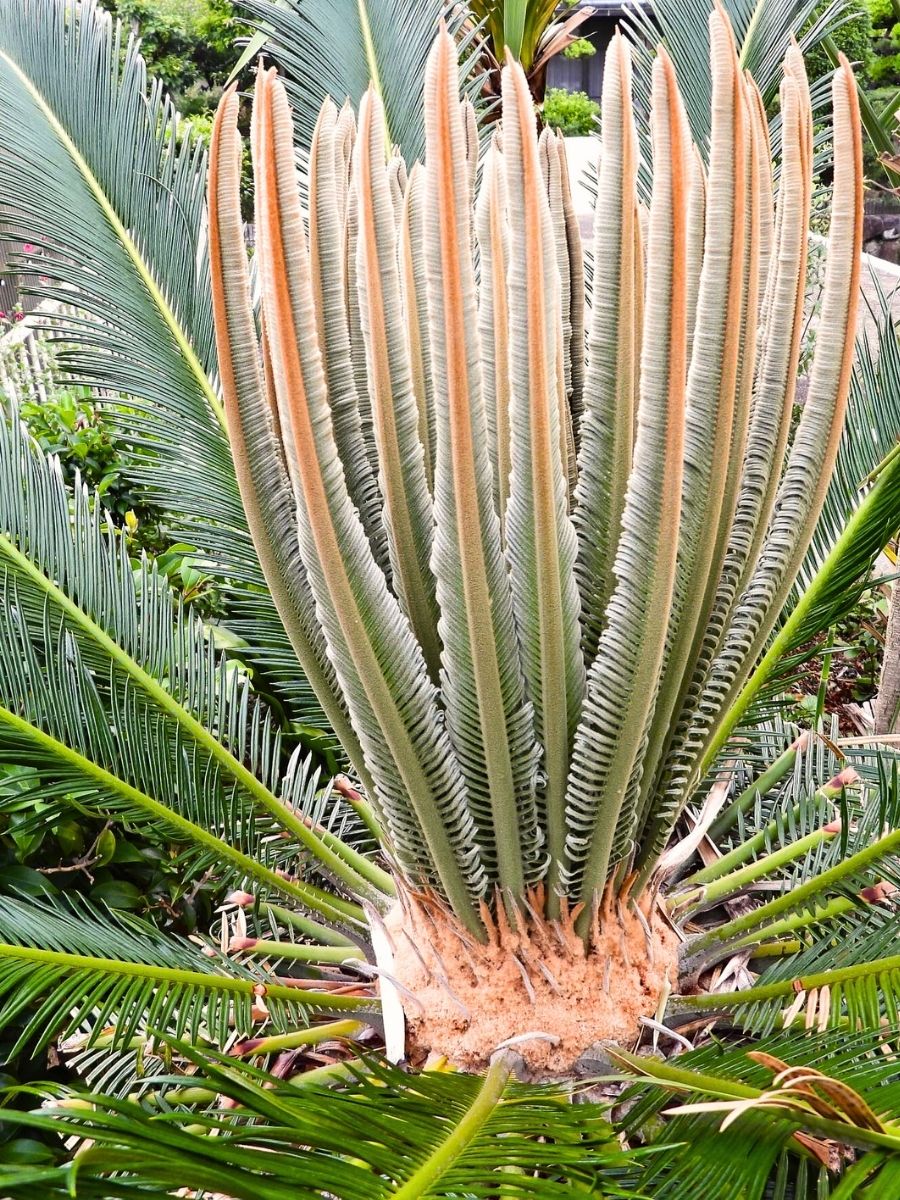
Be on the lookout for root rot signs and always repot quickly to prevent its eventual death. Repotting normally should be done every two years, especially when the palm tree becomes root-bound.
Propagation of the Sago Palm Tree Procedure
Propagating the Sago Palm tree can be achieved through the removal of offsets or pulps from the base of the parent palm tree and also by harvesting and planting the seeds to have new sago palm seedlings.
Propagating from seeds, you will need mature sago palm seeds, trays or pots, plastic wrap, and soil mix. The following procedure ought to be followed.
- Collection of mature seeds found in a female cone, mature seeds ought to be brown or orange in color.
- Fill the pots with a well-draining potting mix and water them not in a soggy way but just sufficiently.
- Plant the seeds an inch into the soil, more than one seed can be planted in one tray, provided they are spaced correctly.
- Using the plastic wrap, cover the seed trays well, to create a warm or humid environment, which will stimulate faster germination.
- If the humid environment is well-maintained, germination will likely occur within a few weeks or a month.
- Once the Sago Palm tree seedlings are strong and big enough, transplant them to bigger containers or your tropical garden.
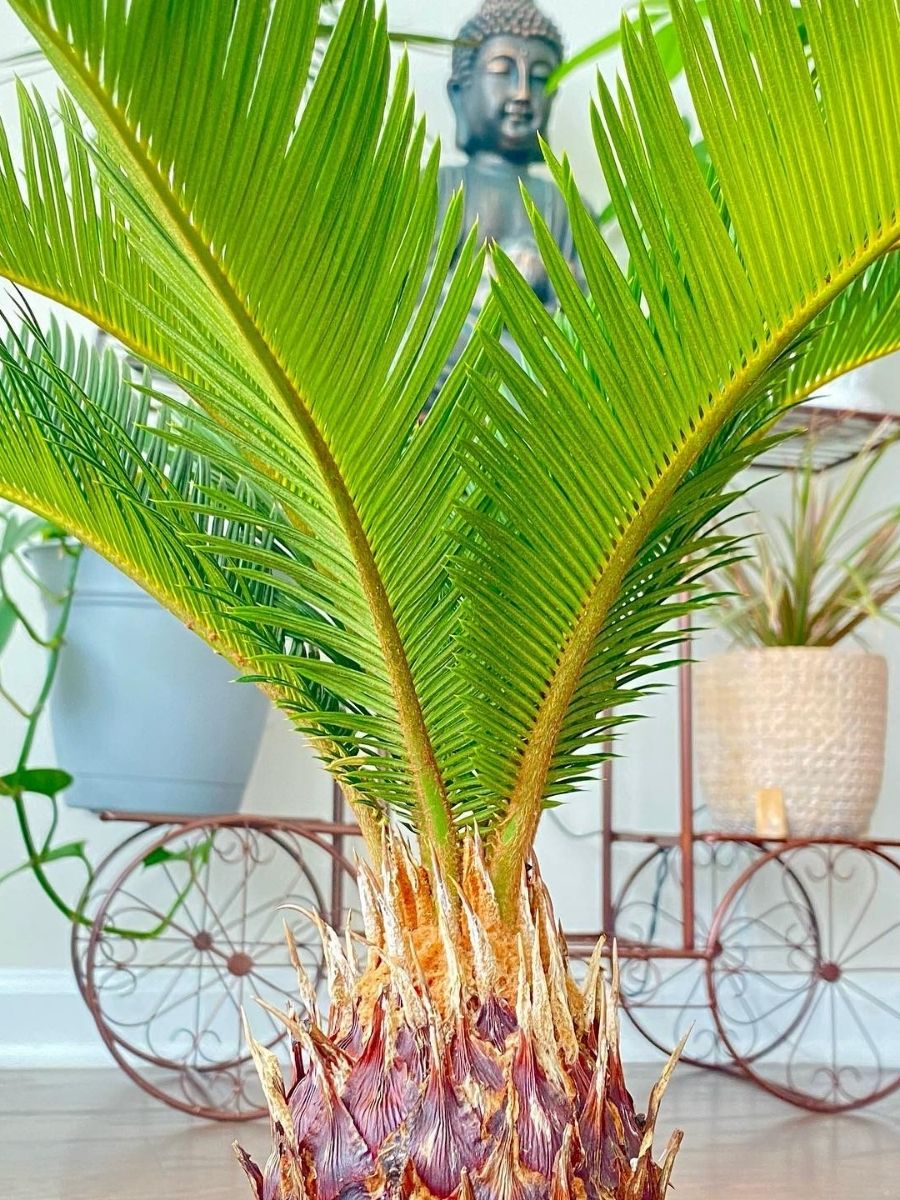
Propagating through the removal of offsets is not a daunting process either, here is a procedure on how to do it.
- Identifying offsets at the base of the palm tree, ensure they are large enough to be separated.
- Prepare to remove the offsets by digging around them to expose their roots, gently remove the offset from the parent palm tree using a sharp knife, and ensure the offset has some roots and foliage.
- Plant the obtained offset into a new pot, with a well-draining potting mix and water it properly.
- Put the container in a location with enough access to sunlight, keeping the soil moist but avoiding making it soggy.
- Over time the root system of your offset will develop, giving you a vibrant sago palm tree ready for transplanting.
The Sago Palm tree is a slow-growing palm, so be patient with its development. Given its slow-growing pace, propagating using the offsets is ideal because it involves already established plants. Keep in mind that every part of the sago palm is toxic and should be kept away from children or pets to avoid any harm to them.
This palm tree will undoubtedly be a great, sleek, and luxurious addition to your tropical garden and indoor spaces altogether. Following the above growing, caring, and propagation guide, will reward you with an elegant, and vibrant sago palm tree to add the right touch of greenery to your spaces.
Header Image by @Robert Featured Image by @Karen Bethke


